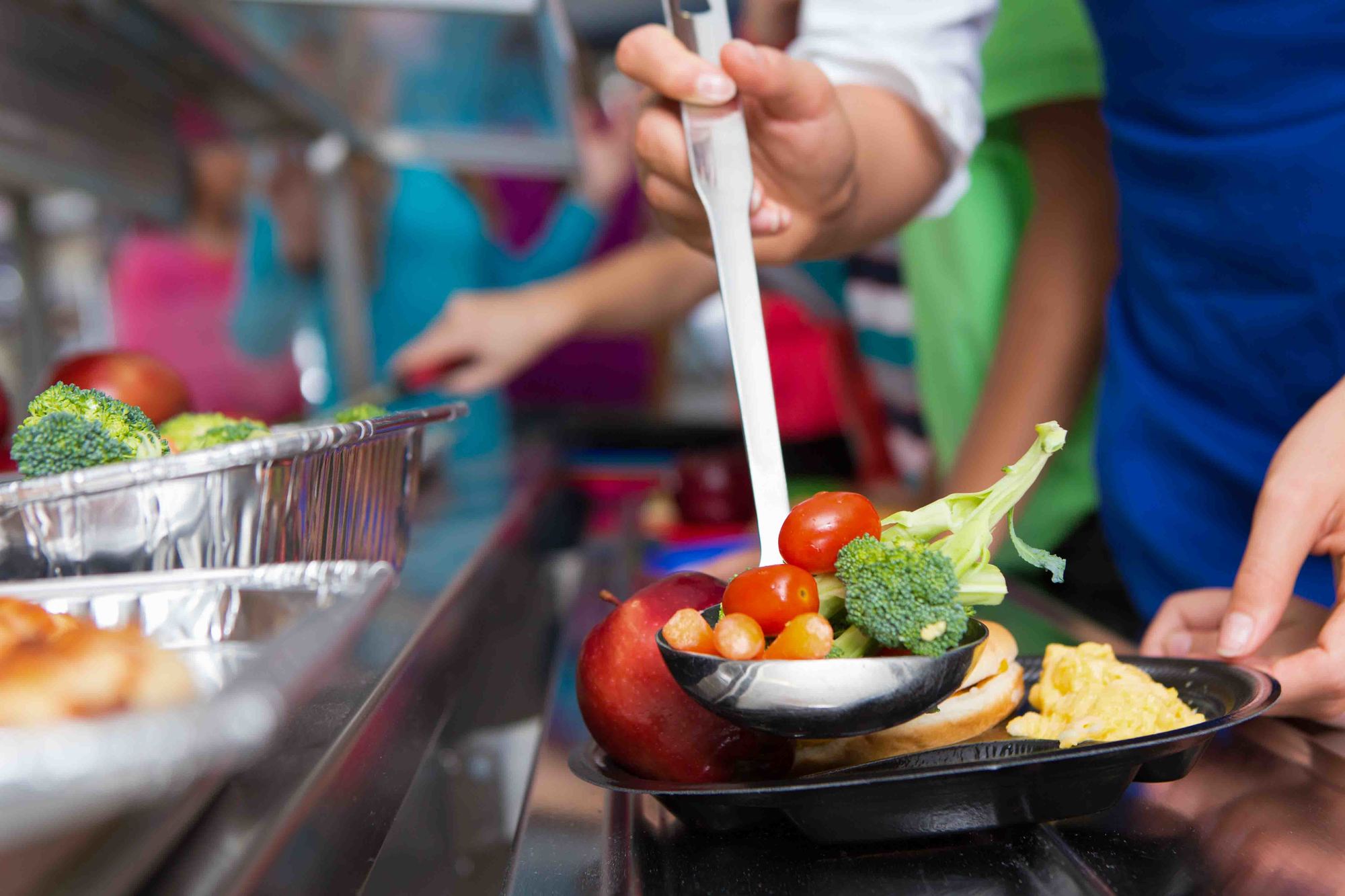What’s Happening to School Meals During COVID-19?
COVID-19 has changed the way food-insecure students receive meals and support. Here’s how your family can get involved.

This year’s “back to school” has been the first-of-its-kind. As our country still grapples with an ongoing public health crisis, schools are learning to readjust to a new normal. Some students returned to classrooms in masks, sitting at desks that have been carefully arranged to keep students socially distanced. Others continue to learn at home using laptops, tablets, and phones.
One thing remains the same: many students rely on the nutrition they receive from school meals to learn, grow, and reach their full potential. In response to this crisis and to meet the needs of the moment, the United States Department of Agriculture (USDA) has granted schools the option of offering meals free of charge to youth under 18 through the end of the 2020-2021 school year. More importantly, families across the country are looking to help one another this school year. School meals provide a chance for families to help their communities.
Support School Meals, Support the Community
During COVID-19, we’ve heard from families across the country that they don’t want to take school meals away from more food-insecure families. However, this school year, and every school year, school nutrition programs really want teens and parents to know that school meals are for all students and aren’t in limited supply. In fact, when more students eat school meals, it helps students, families, schools, and the whole school community.
Here’s how school meals can have a positive impact:
- Maintain Normalcy: School meals can provide a sense of normalcy for teens during this stressful time. Many high school students are missing their friends, their afterschool activities, and their daily routines. This ongoing disruption to learning and socialization could cause trauma. School meals and the familiar faces of school staff distributing meals can provide consistency in an otherwise uncertain time.
- Lessen Responsibility: With work, school, child care, and other routines disrupted, families may find themselves busier and more stressed than ever. School meals can support families by taking meal prep off their to-do lists. School nutrition programs have made school meals easier for families to access too. For instance, these programs are coordinating mealtimes around remote learning schedules and offering meals for multiple days at a time and flexible pick-up windows. Some are even delivering meals via bus routes that are closer to home or dropping meals right at your door. Reach out to your school to find out exactly what is available for meal service.
- Help Your Budget: For some families, this is the first time they’ve struggled to make ends meet, and for others, this crisis has only exacerbated the financial challenges they were already facing. The support of school meals can help to stretch a family’s food budget. The savings from school meals can mean fewer tough decisions for families about where their money goes each month and can make sure that students don’t go hungry.
- Boost Your Health: School meals must meet rigorous USDA nutrition guidelines and always include at least one fruit or vegetable. They must include whole grains and limit the amount of sodium, fat, and calories in each meal. Even though some school food items are packaged the same as they are in the grocery store or corner store, like cereals or granola bars, the nutritional content is different. The corner store granola bar does not have to meet nutrition guidelines, but the school granola bar does. To learn more and get a side-by-side nutritional comparison of a granola bar served at school breakfast and a granola bar bought at a corner store, check out School Breakfast – Healthier Than You Think. You’ll see that the granola bar served in school has less fat, sugar, calories, and sodium than the store-bought one.
- Create Community Support: School nutrition staff care deeply about feeding kids of all ages, but at the end of the day, the school meals program is a business that must stay afloat. The school meals program is not funded by the school district budget and has to generate its own revenue and, like many businesses, the pandemic has hurt their bottom line. According to a report on COVID-19’s impact on school meals by the School Nutrition Association, out of 844 school districts surveyed, the losses from school nutrition programs totaled $483.5 million due to the pandemic. School nutrition departments also needed to buy new equipment to adapt to safer serving models and purchase PPE to keep their workers safe. Despite these adaptations, meal participation has dropped, bringing in less revenue to cover the cost of school meals. You see, school nutrition programs get federal reimbursement for every meal served, which enables them to provide high-quality meals to all students and cover their operating costs. The fewer meals served, the less reimbursement the school nutrition programs get. Like many restaurants, some school nutrition programs have had to make the difficult decision to lay off staff members because of decreased participation. By participating in your community’s school meals programs, you are helping a local business, i.e. your school’s nutrition program, improve job security for hard-working folks in your community who feed students in good times and bad.
Learn from Florida’s School Meal Successes
This year, schools are working extra hard to make sure all students get access to meals. For example, the Citrus County School District in Inverness, Florida ensures that athletes in their three high schools are getting the nutrition they need to perform academically and in their athletic programs. Director of food services, Roy Pistone, designed an afterschool meal and snack program to meet the nutritional needs of athletes, many of whom are attending in-person classes and are at school from 7:30 am until the early evening hours. With those long days, Pistone knew that the athletes would need a meal after school to fuel up for their athletic practice. Pistone rebranded the Florida Department of Health’s supper program to the “SUPER snack program” in his district, which provides athletes a free meal and snack after school.
With the coaches, athletic directors, principals and superintendent fully on board, the SUPER snack program started as a pilot for the football players in the 2018-2019 school. It was so successful, the program expanded to all athletic programs in the high schools in the 2019-2020 school year. Athletes can get a free meal and snack while working on homework or an academic enrichment activity before their athletic practice. The SUPER Snack program has continued throughout the coronavirus pandemic and Pistone has adapted program operations to keep students and staff as safe as possible. As Pistone says, “When we truly are one team, with one goal, working towards ensuring our students succeed, then we all win!”
Pistone, a former athlete himself, remembers the feeling of being hungry after school and not getting additional nutrition before his athletic practices. Now, as a food service director, he relishes the opportunity to provide athletes with an extra boost of energy. The athletes like the food, the parents have been supportive, and the participation from athletes has helped to increase the overall participation in the school meal program.
Learn More on How to Get Involved in Your Community
Take the Pledge. Many teens across the country have taken the pledge to end child hunger, and you can too! Childhood hunger affects every community. Take the pledge by spreading the word about ending child hunger and encourage fellow students to get involved. Help spread the word across your community:
- I pledge to make @NoKidHungry a reality in my school and community. Join me in helping raise awareness about the issue of childhood hunger in America. I’m part of the generation that will end childhood hunger.
- More than 14 million kids aren’t getting enough to eat right now. Join the fight to end childhood hunger in America by working with @NoKidHungry
Thank a Hunger Hero. Do you have a favorite staffer who has gone the extra mile to make sure you got the meals you need? Or is your whole school nutrition team worthy of praise? With these social media graphics (in English and Spanish), you can publicly thank those hunger heroes and give them the props they deserve! Here are a few examples:
- “Back-to-school” may look different this year, but that isn’t stopping [@HANDLE/NAME] at [@SCHOOL/@ORGANIZATION] from making sure students are fed! We’re so grateful to them, and to all the #HungerHeroes, helping students now and always. #ThankAHungerHero
- Let’s all say a huge thank you to the folks over at [@SCHOOL/@ORGANIZATION] for the amazing work they do to get students critical meals while schools are closed. THANK YOU! #ThankAHungerHero
- #COVID19 is bringing a lot of uncertainty into the lives of Americans, especially for hungry students who rely on school meals. That’s why we’re so grateful to [@HANDLE/NAME] at [@SCHOOL/@ORGANIZATION] for working around the clock to get hungry kids the reliable meals they need! #ThankAHungerHero
Eat School Meals. The simplest thing to do is to participate in your local school meals program. Check your school’s website or reach out directly to your school to find out more information.
Speak Out and Stand Up. Reach out for meetings and calls with various stakeholder groups (school nutrition directors, principals, etc.) to encourage prioritizing childhood hunger in your community. Write letters to stakeholders in your community about the issue of child hunger and the importance of school meals. Volunteer and help support local programs in your community, from backpack programs to summer meals to after-school meals.
Want to learn more about No Kid Hungry’s work and the changing landscape of school meals? Check out our article on what school meals will look like with school re-openings and COVID-19.
Want to learn more about how schools are changing and adapting to COVID-19? Check out our comprehensive article on school reopenings and the chance to rethink high school.









